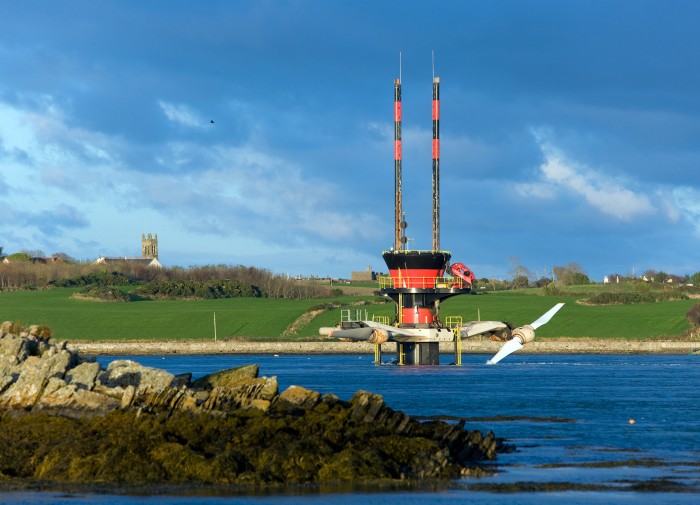Siemens strengthens its position in market for marine current power plants
With its majority stake in the British company “Marine Current Turbines”, Siemens is forging ahead with promising marine current turbine technology. The SeaGen installation in the strait of Strangford Lough is located in Northern Ireland. This prototype of a tidal turbine is already demonstrating the successful implementation of power generation using rotors mounted in water. Not least with this project, Bristol-based Marine Current Turbines has developed from a pioneer into a technology leader in tidal turbines with horizontal axes. SeaGen has in the meantime fed more than three gigawatt-hours of electrical energy into the grid. In terms of power generated it is the biggest marine current turbine project in commercial operation to date.

Photo by Siemens AG
A black and red steel tower rises above the water in the 150-square-meter Strangford Lough in County Down, Northern Ireland. It is part of the world’s first commercial marine current power plant. The SeaGen facility has been in operation since November 2008. Not far from the small coastal town of Strangford the facility equipped with two 600-kW turbines supplies ecofriendly power to over 1500 households.
Purely by utilizing tidal forces the facility reliably generates electrcity with the aid of two axial-flow turbines with a combined capacity of 1.2 megawatts (MW). Two underwater rotors attached to a tower structure drive the marine current turbine. The twin rotors turn with the tidal current and optimally track the flow thanks to their 180-degree-pitch blades.
The crossbeam, to which the two rotors are attached, is 29 meters long. The two drive trains each have a rotor of 16 meters in diameter and weigh 27 tons. The facility is comparable to a wind turbine.
The energy density of the flowing water is, however, 800 times higher than that of wind, thus making it possible to efficiently generate electricity.
News Categories
- » NEWS HOME
- » Automation & Robotics
- » Industry 4.0
- » Material Handling
- » Sensors
- » Quality & Testing
- » Machine Vision
- » Laser & Optics
- » Metalworking
- » Motion Control & Drives
- » Hydraulics & Pneumatics
- » Process Industry
- » Renewable Energy
- » Agriculture
- » Home & Office Furniture
- » Environmental Tech



